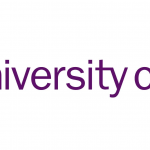Vision
The main vision of NATWORK is to develop a novel bio-inspired cybersecurity and resilience framework for networking distributed systems that transcend a single administrative domain and cross a heterogeneous fabric of resources. This vision is motivated by the new ICT systems landscape and 6G vision. NATWORK will conduct research that is novel in four manners:
- It will close the security gap in innovation between software systems, resource management and networking architectures by providing a fully-fledged modular Net-zero software framework that orchestrates the interaction between software systems, edge computing resources and networking in a cross-domain, AI-based ‘-as-a-service’ approach. Through the wide adoption of virtualisation and cloud-native micro-services, the framework will offer increased flexibility and modularity for optimal resource utilisation, and create tangible benefits in costs and energy consumption. The orchestration of all the NATWORK components will progress from the existing centralized approaches by adopting a highly distributed approach, with domain-specific orchestrators relying on peering with each other.
- It will enable multiple providers to interconnect resources and services using simplified secure-by-design interfaces without having to go through rigid planning and engineering processes, while providing at the same time enhanced CTI and explainable AI interaction with increased trustworthiness. The latter promotes transparency and socio-economic benefits in the European region by supporting a level-playing field for SMEs through fairer opportunities in secure connectivity and breakdown from the monopoly of large service providers. This in turn will foster better support of the SME market and stimulate cooperation amongst different providers.
- Within NATWORK, AI will be natively integrated into several layers of the network, ranging from the physical layer to the vertical application layer. In addition to the network and security function placement, AI will be associated with multiple types of security functions, detecting attacks or restructuring the network to circumvent identified compromised points through AI-leveraged Moving Target Defense approaches. This method will revolutionize addressing zero-day attacks in a coherent way within 6G networks.
- NATWORK will provide a holistic framework to defend against Physical Layer Attacks, since wireless networks are prone to various security threats, such as jamming, sniffing, and eavesdropping. Enhanced PLS will provide security mechanisms at the lowest level of communication, diminishing reliability, bandwidth and data rate limitations. Novel MIMO and RIS technologies will be employed for this purpose transforming their secure-by-design philosophy, and deriving new ways of defense at the core components of the 6G connectivity.



